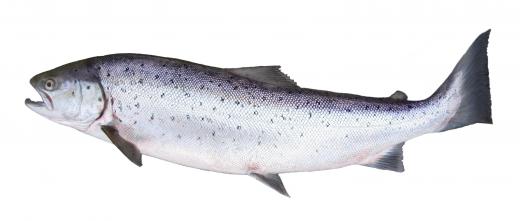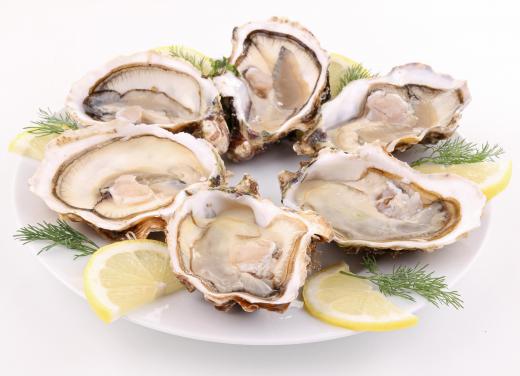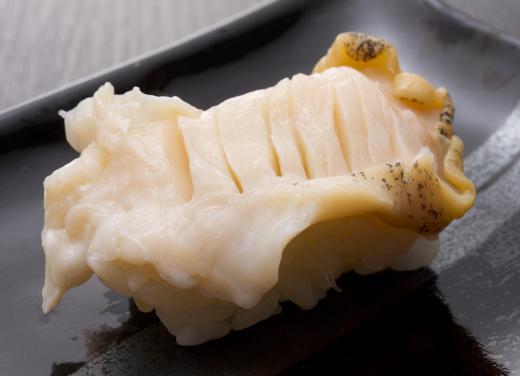What is Marine Aquaculture?
Marine aquaculture is the process of breeding, raising, and harvesting animals and plants for commercial use. Aquaculture can take place in man-made bodies of water or existing waterways. Marine aquaculture refers to raising marine animals, such as shrimp, salmon, oysters, and mussels.
Aquaculture includes many different types of farming. The industry produces hatchery shellfish and fish for release into the wild, as well as the production of shellfish and fish for consumption. Marine aquaculture also encompasses the production of fish for the pet industry, as well as many plants used by nutritional and pharmaceutical companies.

The most common form of marine aquaculture is the production of mollusk shellfish, which include clams, mussels, and oysters. Farm raised salmon is another popular product in marine aquaculture, as is shrimp. While most of the production of these animals occurs in coastal waters, there are several open ocean aquaculture locations.
Several different forms of marine aquaculture used around the world. They include sea ranching, rack and line farming, and intensive aquaculture. Each method has advantages and disadvantages, and farmers often make their choice based on the type of fish or shellfish they plan to grow.

Sea ranching is the process of raising the farmed animals in their native environment. No special facilities are required for sea ranching, and the animals do not receive supplemental feed. This type of aquaculture only works for animals, such as sea cucumbers, that remain in place as they grow. No fishing is allowed in the area until after the harvest.

Rack and line farming provides additional structures for the animals, but no additional feeding is conducted. It is used for animals such as oysters and mussels. The farmers string lines between two buoys and the animals grow either directly on the line, or in net bags attached to the lines.
Intensive aquaculture is the closest type of aquaculture to conventional agriculture. The animals live in sea pens or cages, and the farmer provides them with food. Salmon and tuna are often raised this way. It is also the most labor-intensive form of aquaculture.

There are many benefits to marine aquaculture. They include the production of seafood that tastes good and is consistent in quality, the ability to produce more seafood in less space, the reduction in the number of wild fish and shellfish killed, and the ability for countries to grow their own seafood, reducing the demand for importation. The drawback of aquaculture is that in some countries, government oversight is not keeping pace with the growth of aquaculture, raising potential environmental concerns. Also some forms of farmed seafood are believed to be less healthy than fish caught in the wild.
AS FEATURED ON:
AS FEATURED ON:















Discussion Comments
@MrsPramm - The problem is that marine aquaculture is difficult to regulate well. Often the impacts aren't felt directly, they are felt further away or later on in the year.
And the fishing industry is already feeling intense pressure from regulation, so it seems almost too harsh to put extreme regulations on aquaculture as well, even though it's really in everyone's best interests.
I've got to say that I'm a big fan of having marine reserves, where fish and other marine creatures can naturally live in safety and build up their numbers, rather than trying to do this in a more artificial way. I think the data shows that this is more successful for the fishing industry as a whole.
@bythewell - It's good in theory, but in practice most aquaculture is extremely disruptive to marine ecology. When you pack one species into a concentrated place in order to protect them, they end up making a mess of that place because all their byproducts are condensed as well.
Also, the whole point of having those fish as an integrated part of the ecosystem is so that their eggs and fry can provide food for other species.
I think that marine aquaculture can work, but at the moment it's extremely commercially orientated and there isn't enough regulation to ensure that the environment isn't damaged.
There are a lot of benefits to marine aquaculture. There are so many places around the world where fish stocks have been depleted to the point where they might never recover.
Fish aren't that difficult to breed in general, since they have hundreds of eggs per clutch, it's just that the eggs and fry are so vulnerable that they will probably become food for something else in the wild before they grow up to be breeders themselves.
If you raise the fish in protected areas, you basically allow many more of the young to reach their mature sizes without impacting the numbers in the wild when people harvest them.
Post your comments